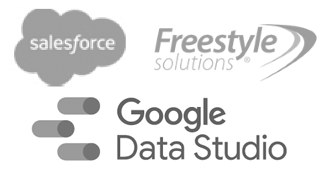I’ve been focusing on RFM (Recency, Frequency, and Monetary Value analysis) in this blog as it is a tried and true method for predicting customer response for many years.
However, the debate continues as to which customer scoring approach – RFM or Statistical Modeling – really works best for direct marketers. Three views are summarized below, but we’re also interested in your own results. So please feel free to chime in – contact DMSI, and we’ll publish selected views.
In MultiChannel Merchant magazine, Steve Trollinger added to the debate with an article entitled “Modeling vs. RFM.” Trollinger concludes that “for an active housefile of less than 250,000 customers, RFMP segmentation with firmagraphic enhancements probably is the best way to go. Models certainly can help cut some of the fat from your mailings, but they may not generate the kind of lift you’d expect at the top of the file. But if your file is large enough, and you’re a frequent mailer, modeling may be the way to go.”
In a case study for the 2005 NCDM conference, Patrick Hanrahan of Eagle Eye Direct made the case for statistical modeling over RFM. Hanrahan studied the results of both approaches for a national non-profit fundraising campaign of 2 million active names. He concluded that the vast majority of mailed names were chosen by both the RFM and the model analyses. But the RFM approach also included a large number of unprofitable names that the model did not include. Thus, his preference was to use modeling to save on mailing costs and still achieve comparable profits.
Strategic Database Marketing, by Arthur Hughes, is an excellent text that I use with my graduate marketing students at Johns Hopkins University. Hughes makes the point that both approaches have great value, and that indeed “a good model, properly run, can outperform RFM.” But he goes on to say that good models are often more expensive and difficult to run. They require statistical expertise, whereas RFM is strictly mathematical and can be understood by marketers.
In summary, to quote Arthur Hughest, “to determine whether to use a model, you must accept the idea not only that the model has to be more accurate than RFM (which it probably is) but also that it gives you enough lift in response to pay for the model, plus beating the RFM lift. Except in the case of a very large database, this is seldom true.”
It seems that the take-away from this debate, as my students often say, is “it depends.” How large is the database(s)? What is the cost of unprofitable files (for an organization that primarily uses email, this may be low)? And finally, which method does your organization have the resources – both financial and expertise – to sustain?
 Professor’s Corner:
Professor’s Corner:
5 Ways to Misuse & Abuse RFM Analysis in Database Marketing
Used properly, RFM analysis (Recency, Frequency, and Monetary Value) is a basic, valuable modeling approach to score your customer base. Scoring is done in advance of a mailing campaign, to help predict a customer’s “likelihood to respond”. As a strong measure of human behavior, it is now also being used in fields outside of marketing, including crime prevention. Like any tool, however, RFM can be misused and abused. Here are some problems that can result from bad assumptions (or implementation) of RFM.
- Self-fulfilling prophecy: When launching a campaign, record a snapshot of the RFM values “pre-campaign” for later analysis, rather than “post-campaign” when you are ready to do matchback analysis. Even DM pros make this mistake. Post-campaign scores tell you what you already know – who ordered. Comparing it to pre-campaign scores reveals the strength of the campaign.
- Ruining the Honeymoon. If you are scoring the frequency of new customers improperly, you risk ignoring and losing them in your next campaign. New customers – who may have just fallen in love with your products/services – do not have the high frequency counts as veteran customers. On a raw frequency basis, their low scores disqualify them for your next campaign – a big mistake! Instead, new customer frequency counts should be compared and scored with other recent customers on a peer group basis (not on a raw frequency basis).
- Tis’ not the Season. Traditional RFM – e.g. using 3 or 6 month intervals to score Recency – does not work well with seasonal business models. If your business fits this category, try a quintile or decile approach instead. Your seasonal spikes of activity will be smoothed out. For instance, if you are selling Halloween costumes, a quintile approach will create a continuous distribution of Recency scores over time – rather than spikes in October.
- Long Buying Cycles. RFM works best for businesses selling consumable items, not as well for businesses with long buying cycles. The longer cycle makes it harder to time promotions properly, and may result in devaluing RFM. Don’t despair! Even with a long cycle, RFM can still provide benefits. For instance, consider sales of accessory items, or reminders to recent satisfied buyers to refer friends/family.
- RFM – which variable is dominant? In terms of predictive value, the traditional thinking is that an “R” score trumps “F”, and “F” trumps “M” (hence, the name RFM rather than MFR or FMR).
Emphasizing Recency is sort of the “what have you done for me lately” approach. Of course, every business has different buying patterns which deserves study to determine which variables are really dominant (usually with regression/correlation analysis). A study of one of our client’s database revealed that the influence of the RFM variables was exactly the reverse of what we expected – namely, M, F, then R. Another client database showed a $100K order (yes, one order) for a customer who had lapsed for 4 years.
Learn more: ask us about “Retro RFM”, a new feature in our WiseGuys Marketing Software. Retro RFM can go back in time to score customers from your old mail files. Then the good news: with fast and easy multiple regression analysis, DMSI staff can establish the dominant R-F-M variables for your specific business (see #5 above). Call our offices at 703-941-8109 for more info.









